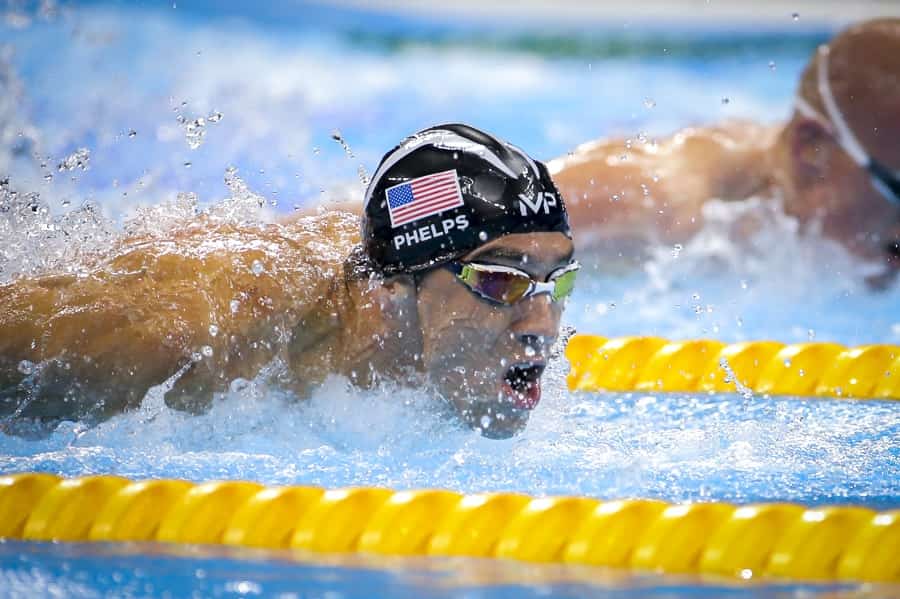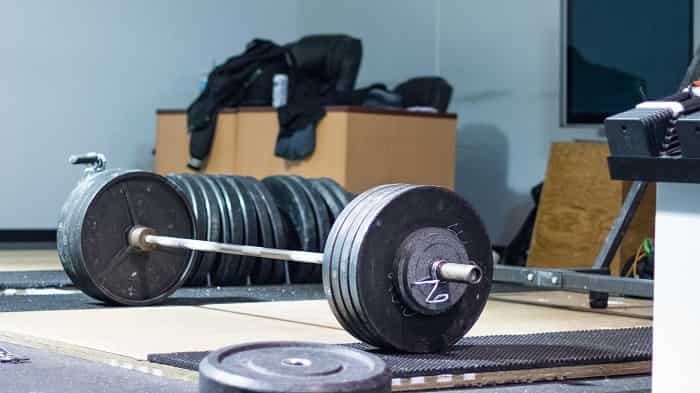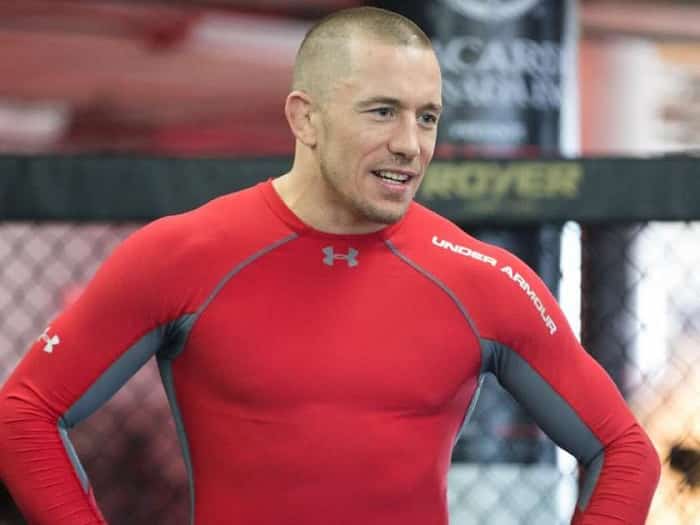
The ultimate guide to visualization for athletes, including everything you want to know about how to use this powerful and proven tool.
The worst nightmare for most athletes is their equipment failing them when they need it most. On the night of August 13, 2008, this exact nightmare was playing itself out for Michael Phelps while half the world watched live on television.
Beijing was supposed to be Phelps’ Olympics, and so far it had been. The relay team had delivered on the opening night in the 4x100m freestyle relay, upsetting the favored French squad. He’d dominated the 200 freestyle. And now, in his marquee event, the 200m butterfly, a race that he’d qualified for his first Olympics as a 15-year old in 2000, Phelps was quickly losing his ability to see.
On the opening dive he’d known immediately something was wrong. His goggles had sprung a leak and were quickly filling up with water. By the time he touched the final wall at the 150m mark he was effectively blind.
He swam the last 50m relying completely on his stroke count and the thousands of times he had rehearsed this exact moment. When he slammed into the wall Phelps had won gold, and shaved six one hundredths of a second off his own world record.
When asked by a reporter afterwards how it felt to swim the race blind, Phelps replied:
Like I imagined it would.”
The Power of Visualization
Phelps was a daily user of visualization techniques, and one of the things he credits as being a part of his mental approach to the sport, which helped him achieve an astonishing amount of consistency over five Olympiads. As a young swimmer he was very emotional when it came to races, and he had a hard time keeping himself in check when standing behind the blocks.
One of the ways that his lifelong coach Bob Bowman helped him to relax was regular visualization. Each evening when he lay in bed Michael would imagine the perfect race from beginning to end.
Over and over again, everything from how he gripped the blocks, to how many underwater dolphin kicks he would do off the wall—everything was practiced in his mind so that when he got up on the biggest stage in sports he could relax and let his body play out what he’d imagined.
This would also extend into his pre-race routine, which was the same from top to bottom—he would perform the same warm-up, same stretches, and even the same movements on the blocks prior to the race in order to breed a sense of comfort and familiarity.
By making his desired result routine over the course of thousands and thousands of mental rehearsals Phelps had insured that he would win gold long before the starter’s gun ever went off.

The Hilariously Powerful Benefits of Visualization
Phelps is not alone in using visualization as a performance aid.
Golfer Jack Nicklaus, track legend Ed Moses, gymnast Mary Lou Reton, hall-of-fame basketball player Bill Russell and the greatest sprinter of all time, Jamaica’s Usain Bolt, all used visualization to get the most from themselves.
But what does visualization (or mental rehearsal) do for us that is so powerful? How can it help us become a better athlete?
Here’s how:
Mental rehearsing gives you a sense of calm and familiarity in high pressure moments.
By simulating an experience in your mind when it happens you get a mild sense of having already done it. In this respect, it becomes just another session instead of a brand-new experience, bypassing the nerves and jitters that comes along with it.
This is particularly helpful for those who have trouble managing their arousal levels (haha—yeah, I know, I’m a ten year old) and keeping their emotions in check in high pressure situations.
It will keep you focused on the process.
One of the coolest ways that you can wield visualization has nothing to do with racing or your game day performance. It’s wielding it to get more from your day-to-day workouts, and even help you make working out a habit.
Some nifty research was done with students at UCLA who had a midterm approaching in a week’s time. The researchers split the students up into two groups:
The first group were told to picture themselves doing well on the mid-term. The second were tasked with focusing on the process of doing well.
The results?
The process-based group–the students who visualized what it would take to perform well on the midterm (i.e. studying)–both studied more and performed significantly better on the midterm. Not only that, but the process-based visualizations resulted in less anxiety and stress in regards to the midterm.
This can be applied to you and your workouts and even your lifestyle goals. You can visualize yourself:
- Dutifully doing your meal prep.
- Getting to bed early and getting a metric ton of sleep.
- Showing up early to practice.
Whatever goals you have in your life you can use visualization to help you along with the process.
Lays the groundwork of a successful performance.
One of my favorite stories involving visualization involves Megan Jendrick (born Quann), a teenage American swimmer who upset the favored Penny Heyns of South Africa in the 100m breaststroke at the Sydney Olympics in 2000.
Each night for four years she would imagine the perfect race from beginning to end—what the pool tiles looked like, the taste of the water, the sound of the crowd—and would time herself. With a stop-watch she times the rest of her visualization, rehearsing the dive, the pullout, every stroke and turn, clocking herself, usually in a new best time or world record.
When she stepped on the blocks in Sydney her ideal race had already been achieved thousands of times. What followed was simply an extension of her rehearsals.

Give your workouts a boost.
While most athletes will use this tool in regards to competition, you can throw it at your workouts to improve performance in the gym as well.
When a group of high level track athletes were tasked with rehearsing the sprint they were about to do their performance significantly improved. Simply imagining the result they wanted in the moments before they did it gave them a serious boost.
There is an almost endless number of ways that you can use this knowledge in your wok workouts:
- Before a max bench press picture yourself executing the lift flawlessly.
- When you are on your last rep of sprints imagine yourself exploding out of your first few steps into a technically efficient run.
- Before you dive into the water for a swim picture yourself gliding through the water effortlessly.
And so on!
The distraction aspect of this research is also great for game day or when the gym is bustling: you can block out everything that is going on around you, the crowd, the competition, and even the stress and jitters bubbling inside you, and focus on rehearsing your performance.
You learn a new technique or movement faster.
Ever heard of monkey see, monkey do?
Well, it turns out there is more truth to that saying than you might realize. When you are mentally rehearsing the skill or technique you want to execute you are firing those little neurons across your brain that are responsible for skill acquisition.
Let’s say you were trying to learn how to do proper squat jumps.
You would watch a couple YouTube videos, and then visualize yourself performing the movement. Will you master it right away? No–but you will be closer than if you were just winging it.
It’s the same reaction as if you were trying the move in the real world–your brain has great difficulty distinguishing between real and imagined experiences.
Learning something is hard enough, and while rehearsal can’t completely replace doing it, it can certainly speed things up.
You master your thoughts.
Here’s a fun fact for ya… You are already using this tool.
Yup, each day, whether consciously or not, you are visualizing. True story. When you worry about an event, or think about an upcoming game, or you convince yourself that you stink at something, you are visualizing.
The only difference is now we are going to do it with intent and purpose, while corralling those negative thoughts and rehearsals and replacing them with something more productive.
A side benefit of wrangling all that negative thinking is that you’ll experience a surge in optimism and confidence. Booyes.
It helps you stay calm in the storm.
It goes without saying that the competition doesn’t give a baker’s crap about our goals. The guy across from you doesn’t have your goals in mind, and if anything, is going literally out of their way to prevent you from achieving it.
Additionally, there are a multitude of things that can happen on game day from bad weather to injury to things going completely off the rails. So what can we about this? Not much, right?
High level athletes visualize these hiccups and setbacks, and then imagine themselves overcoming them.
Here’s an example.
The sport of MMA is about as predictable as you can get. You are literally fighting another person who is doing all they can to resist you. It’s a sport where you have to be able to keep a clear head in the midst of blows raining down on your face.
For George St. Pierre, one of the greatest UFC fighters of all time, he used visualization as a means to keep his poise.
He pumps himself up with positive thoughts, seeing himself winning, and also putting himself in difficult situations and getting out of them,” said MMA analyst and author Lito Angeles.

This is one of the underrated aspects to visualization. By rehearsing yourself overcoming adversity it prepares you for the inevitable moment when things go haywire. (And they almost always do!)
It gives your self-confidence a shot in the arm.
I hear a lot from young athletes who struggle with confidence. They work hard, show up to all their practices, but they still aren’t completely sure of themselves and their potential. Regular visualization can help with this in a big way. (And who doesn’t want to feel more confident?)
Over the next couple minutes imagine yourself executing a perfect workout. Or dominating your best time. Picture how good you are going to feel afterwards accomplishing your goal in the gym or on the field. When you come back to reality, you’ll notice that you feel a bit better. A bit more optimistic. A bit more confidant.
This is the power of visualization—all you did was daydream about the experience you want for a couple moments and already you feel more confident.
You like that? I like that!
How to Get Better at Using Visualization
Alrighty, so now that you are amped up on visualization and all the things that it is going to do for your workout motivation and performance in competition, here are some tips for making the most of this tool:
1. The more it’s done, the better you get at it. Think of visualization as a muscle—it’s something that gets stronger and helps you more as an athlete the more that you use it. Most athletes read up on it, try it a couple times, and disappointed with the lack of immediate results toss it to the side. It’s a skill, and like anything skill, the more you do it, the better you get at it.
2. Schedule it into your routines. Make it a regular part of your training and competition routines. For example, you could dedicate five minutes when you get into bed each evening rehearsing your ideal race. Make it a part of your pre-game, pre-race or pre-workout routine. Schedule it a couple minutes before you want to perform for maximum effect.
3. Feel the details. The more details you add in your visualization the more “real” your subconscious believes the experience. Add little details of sights, sounds and even smells to strengthen the connection. Picture the shoelaces on your shoes tightening around your foot when you lace up. Imagine the texture of the cold pool deck beneath your feet.
4. Unleash your inner camera crew. One of my favorite visualization techniques goes beyond just imagining my perfect race or workout—it involves using different views or “cameras.” Rehearse with different views or perspectives to help deepen the impact of your visualization.
5. Picture yourself overcoming struggles. Mental rehearsal shouldn’t just be about imagining the absolute perfect outcome—you need to be ready for the unexpected, or at least expecting that things won’t go perfectly to plan. Visualize less-than-optimal circumstances, and then yourself overcoming them.
The Takeaway
Visualization is a tool to add to your arsenal, not a replacement for fundamentals like practice, getting adequate rest, and eating like a friggin’ champion.
While it is effective and can help you in a variety of ways boost performance, it doesn’t replace hard work.
Tonight before you go to sleep spend a few minutes purposely imagining yourself crushing tomorrow’s workout. Hitting that game winning jumper. Dominating the competition.
More Stuff Like This:
- The Ultimate List of Workout Routines. Our ever-growing collection of workouts and routines from some of the top trainers and strength coaches on the planet. Whether you are an athlete, weekend warrior, or just looking to switch things up in the gym, we got ya covered.